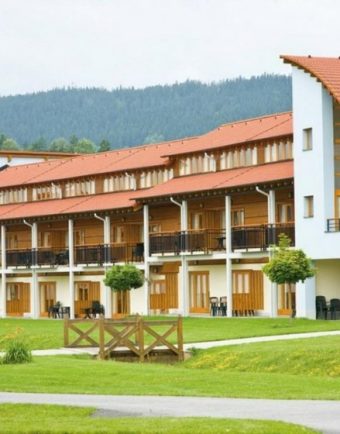

Přejít k obsahu | Přejít k hlavnímu menu | Přejít k vyhledávání

“The technologies are here, let’s use them!” In those five words, the hope for a better future was hiding recently. For more efficiently managed cities, homes, flats, homes – who really use the technology to make people live better. Unfortunately. Hope disappeared. First, they took it for their marketing, which
“The technologies are here, let’s use them!”
In those five words, the hope for a better future was hiding recently. For more efficiently managed cities, homes, flats, homes – who really use the technology to make people live better. Unfortunately. Hope disappeared. First, they took it for their marketing, which they began to “label” literally everything with the word smart. Television, kettle, watch, bra, socks or vibrators. Then the words were taken by politicians and officials who felt the chance to get closer to European subsidies. In many cities, special smart commissions have been set up, and on them are sitting (and, unfortunately, they are also often bossed by people) who have absolutely no technological know-how. Here’s a fragrance box from which “smart” has been added. For example, a children’s watch for painting a vision of the future or an electronic questionnaire on the website. The most important ethos of the story has disappeared. The technologies that communicate with each other sparkle and then analyze data themselves and help optimize our lives. Whether it’s comfort, investment, time or environmental footprint.
The whole thing is even worse than the technology that is actually already invented, there we have it. Every day, incredible progress is also made in data processing – today it is still referred to as “big data,” but artificial intelligence will soon be able to help – which will lead to further improvement. In practice, this means that the machine will be able to see things, decide for themselves what is really the best option and then will automatically put it into practice.
One model, and reader, for example, remote, example? Air quality monitoring. Twenty years ago, you opened the window and had a great chance of feeling a fresh air. But since then, there are three times the number of cars in the streets, which, despite exhaust controls, produce much more emissions. In city centres it is not breath taking, so offices buy air conditioning with fresh air imitation and temperature control. Besides, you also have an enemy in the offices that you would not expect. For example, carpet or furniture. If you feel “such a strange odor,” then you can be sure that your lungs are just getting busy.

“We have checked offices and found that in the vast majority of them, you absolutely cannot stay healthy there. That’s why we’ve tested them with sensors that can simply clean the air to the desired level. Just a sensor and an actuator – basically a negligible investment. But it is badly sold because many people tend to underestimate or completely ignore the influence of unhealthy air at work. On the other hand, if you have – and we have – packages available for easy connectivity with other useful technological add-ons in the office, it makes sense. We add air to light, air conditioning, heating, savings, thermoregulation, automatic multimedia control. Add to this all the artificial intelligence that automatically collects data and makes (without you noticing or without feeling any comfort) a useful step towards greater efficiency, lower costs and better health. For example, ventilation without you noticing. Or it goes out in rooms where nobody is. The result is positive changes in the order of tens of percent in all monitored indicators, after all, the data is known,” says Boris Kamenický of iNELS, one of Europe’s leading intelligent office, wiring and smart city technology companies.
But as he says, every installation of smart technology is just one small piece of work in the mosaic of a smart city complex that we dreamed of years ago, but we are heading much slower than we can today. “The advantage of smart technologies is their synergy. The more you have, the bigger the effect for you. If there’s one smart office in the city, of course it’s better than none. On the other hand, if you do not run it with the whole building, including parking, you only benefit from a third of potential benefits. If the whole smart street is created, the effect will be multiplied. My dream state is the day when we give the data the possibility to use the technology to make the city more efficient. Then suddenly we realize that there are many useful consequences – the cities are not overcrowded, the cars have parking, the houses do not overheat, they do not let out into the atmosphere unnecessary harmful gases, we only illuminate wherever possible, we manage the transportation meaningfully. I hope the ice will break, the experts will come and I will not wait for another thirty years. The technologies are here, let’s use them,” concludes Boris Kamenický.